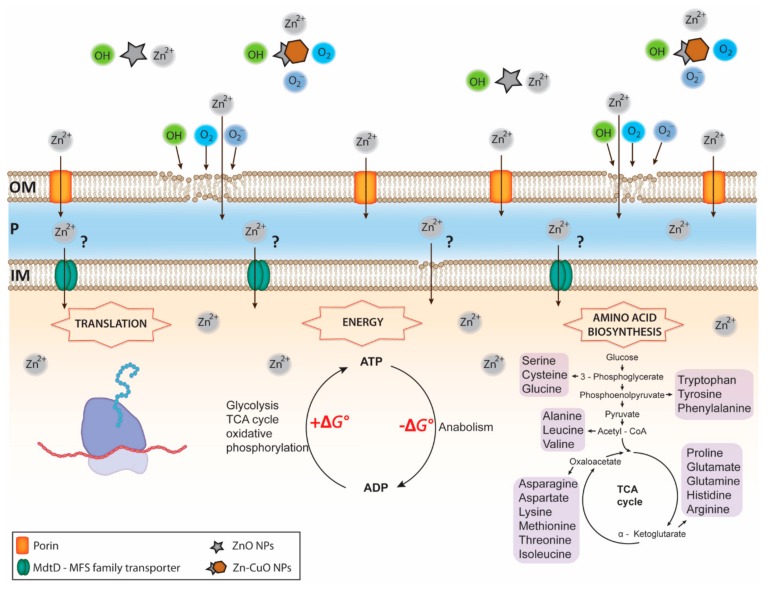Figure 1.
Overview of Zn NPs mediated toxicity against a Gram-negative organism. ZnO and ZN-CuO NPs release high concentrations of reactive oxygen species (ROS) and Zn2+, followed by Zn2+ entrance into the periplasmic space via porins and the outer membrane lipid peroxidation caused by ROS (i.e., OH, O2, and O2−). The process of lipid peroxidation leads to an increase the outer membrane permeability, resulting in an enhanced influx of Zn2+ into the periplasm milieu. Transport of highly concentrated Zn2+ across the inner membrane remains largely unknown. It can be hypothesized that Zn2+ enters the cytoplasm through a permeabilized inner membrane, caused by an ongoing process of lipid peroxidation and also via MFS transporters, as they can facilitate symport, antiport and uniport transfer in response to chemiosmotic ion gradients. Once penetrated, the intracellular Zn2+ reacts with a wide range of proteins leading to down-regulation and inhibition of enzymes and proteins involved in translation, the ATP cycle and the amino acid biosynthesis, all key metabolic processes. Disruption of these central metabolic processes leads to serious metabolic imbalances and finally to cellular death. OM, outer membrane; P, periplasmic space; IM, inner membrane.

